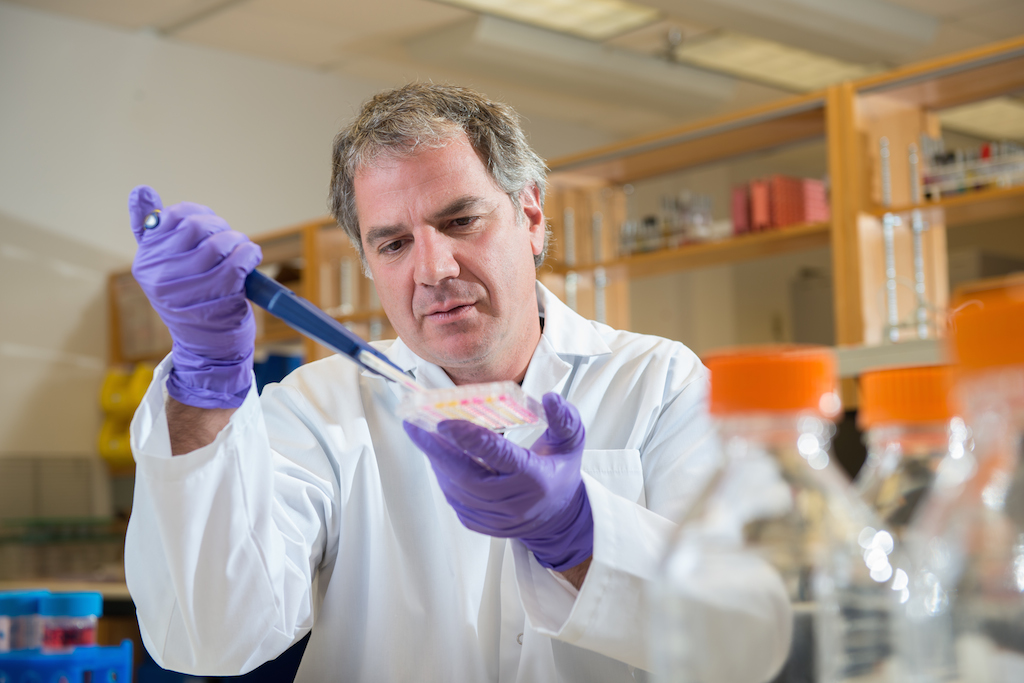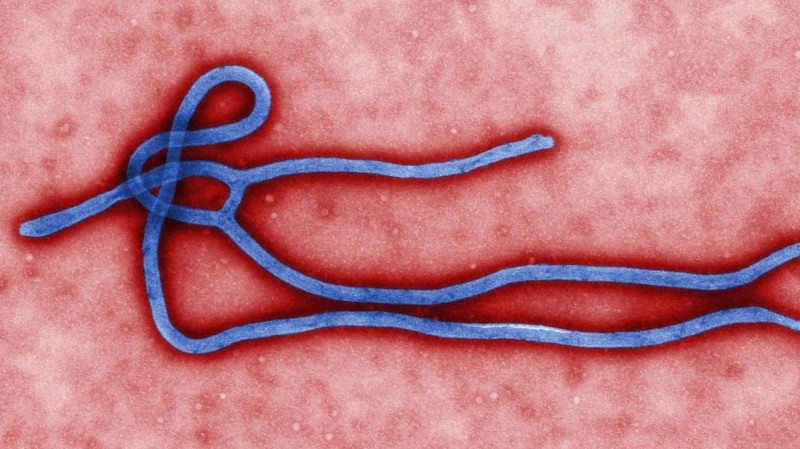
Professor Gary Kobinger has dedicated his life to fighting diseases like Ebola
Advancing the fight against Ebola
Gary Kobinger succeeded.
“It was my dream — I think it is the dream of most scientists — to develop something that can save lives,” he told the Winnipeg Free Press in a 2015 interview. “With each patient that recovered after treatment, for me and others in the lab, it has been magical.”
Kobinger, U of M associate professor in medical microbiology, and his team of 15 U of M researchers working at the Public Health Agency of Canada’s National Microbiology Laboratory (NML) found a treatment for people already infected with Ebola. (The Zebov vaccine to prevent Ebola infection is also a U of M discovery, dating back to 2005.)
During the summer of 2014, with all eyes on the outbreak in West Africa, Kobinger, chief of special pathogens at NML, announced on behalf of his group an even more effective cocktail of antibodies than their headline-grabbing mixture from two years earlier. This time, they showed all of their lab’s monkeys could be saved up to five days after infection, even if they were already severely ill.
“It was very exciting, considering that for the longest time people have been saying that you can’t use antibodies to treat Ebola, that you need more than just antibodies. So it was very satisfying to show that, yes, they can be used,” says Gary Wong, one of Kobinger’s U of M graduate students.
The findings were generating excitement among their colleagues across the globe too. Thomas Geisbert, a professor of microbiology and immunology at the University of Texas Medical Branch in Galveston, wrote a journal commentary that accompanies Kobinger’s study when it was published in the journal Nature in August 2014.
“I think it’s a monumental achievement in the field,” Geisbert said of Kobinger’s findings. “The fact that they were able to treat these monkeys in a time in the disease course when you can actually detect virus in the blood of the animals and when the animals are quite ill and then be able to use the ZMapp and still be able to protect the animals against a lethal Ebola virus infection is a very stunning and certainly a promising finding.”
Doses of the life-saving treatment, produced using a tobacco plant system and dubbed ZMapp™, were shipped to West Africa and used to help save infected patients returning to developed countries—including the first faces to make the news, American doctor and missionary Kent Brantly and nurse Nancy Writebol.
“U of M is a critical research and academic partner of the NML,” says Keith Fowke, professor and department head of medical microbiology at the College of Medicine, Faculty of Health Sciences. “The collaboration is a great example of a government and academic partnership that has accelerated the fight against Ebola in a time of crisis and made possible the rapid development of the vaccine to be used in the field and fight the Ebola virus.”
Kobinger agrees: “Professors, graduate students and post-doc fellows from academia are vital to our research enterprise at NML and our history of working jointly together has resulted in many successes over the years of which we can all be proud.”
Back in June 2005, two University of Manitoba/NML researchers made international headlines for a breakthrough in the battle against Ebola and Marburg, two of the world’s deadliest viruses: Steven M. Jones and Heinz Feldmann announced the development of vaccines that were – amazingly – 100 per cent effective in protecting monkeys against infection from the viruses. These were the first vaccines to protect nonhuman primates from Ebola and Marburg, and their success was a highly promising indicator of the potential for the vaccines in protecting humans, since primate symptoms are similar to those observed in humans infected with Ebola or Marburg virus.
In the summer of 2015, interim findings from a World Health Organization clinical trial on Zebov’s efficacy showed than none of the 2,014 people vaccinated developed Ebola after 10 days post vaccination. This prompted the WHO to call the initial results “exciting and promising.”
For Kobinger, the future looks much brighter for West Africans who suffered more than 11,000 deaths in the recent devastation. “Zebov is a very important tool to minimize Ebola in West Africa. With the vaccine and Z-Mapp treatment preventing the disease from spreading, an Ebola outbreak, like we saw last year, should never happen again.”
To learn more about the team of dedicated U of M medical microbiology and immunology researchers who put the world’s health front and centre, read these stories:
Staying ahead of the curve
In the battle against Ebola
Antibody cocktail defeats Ebola
Research at the University of Manitoba is partially supported by funding from the Government of Canada Research Support Fund.







